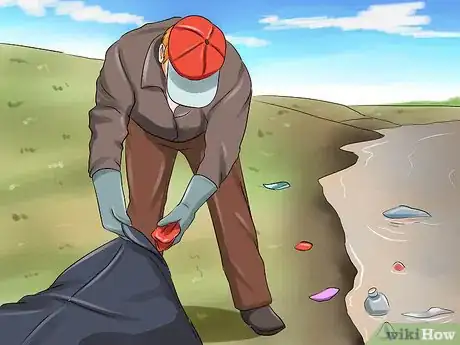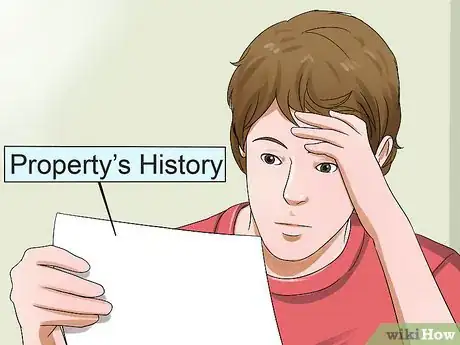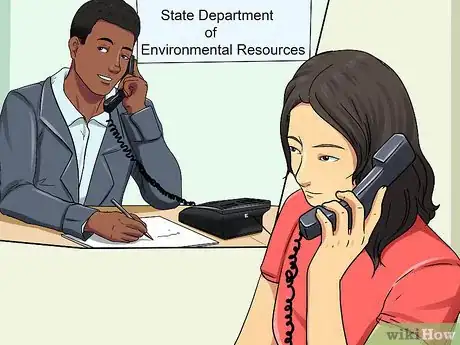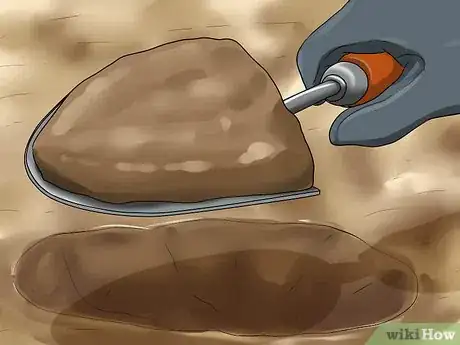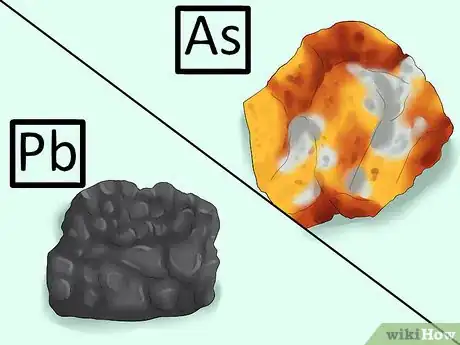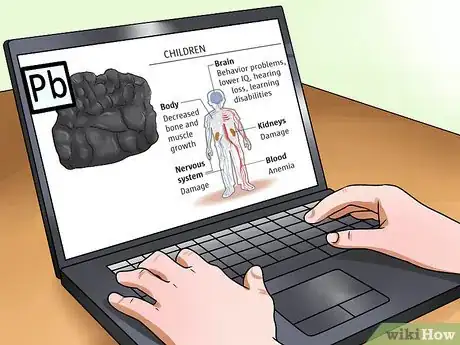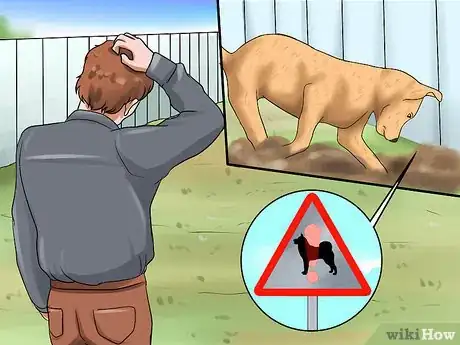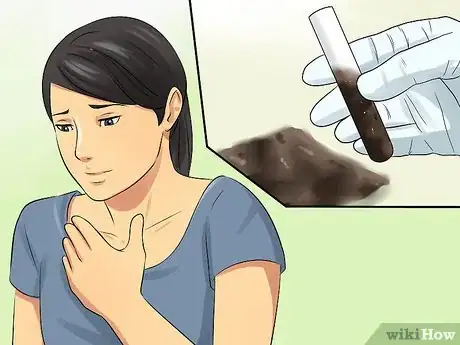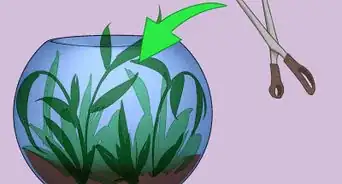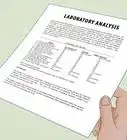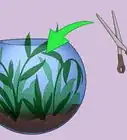This article was co-authored by Bess Ruff, MA and by wikiHow staff writer, Christopher M. Osborne, PhD. Bess Ruff is a Geography PhD student at Florida State University. She received her MA in Environmental Science and Management from the University of California, Santa Barbara in 2016. She has conducted survey work for marine spatial planning projects in the Caribbean and provided research support as a graduate fellow for the Sustainable Fisheries Group.
There are 7 references cited in this article, which can be found at the bottom of the page.
This article has been viewed 16,561 times.
If you have kids or pets digging around in your yard, or want to plant a vegetable garden, you should take some time to consider the possibility of your soil containing potentially dangerous toxins. Some unhealthy concentrations of soil toxins occur naturally, but most of them are deposited by way of human activities ranging from driving cars to painting houses to spraying plants with chemicals to ward off insects. Only testing by a professional laboratory can determine for sure if there are dangerous amounts of toxins in local soil, but knowledge of a property’s history and proximity to potential sources of contamination can provide good clues about the possibility.
Steps
Determining Which Tests Are Needed
-
1Decide if the likelihood of contamination justifies testing. If you remain unsure as to whether to conduct soil testing, consider using the following checklist to help make up your mind. The more factors that apply to your property, the more important testing becomes. Determine if the property:[1]
- has or once had on it any buildings painted before 1978 (when lead paint was banned in the U.S.).
- has or had pesticides or fertilizers used on it regularly.
- is on or near a current or former industrial site.
- is near a high-traffic roadway (where lead concentrations from now-banned leaded gasoline are often still high).
- has older pressure treated lumber (which once contained arsenic) on it.
- has a history of petroleum spills on it or near it.
- has been used as an auto repair garage or junkyard.
- has been a site for furniture refinishing operations.
- is built on a landfill or is near one.
- has had any structure fires (which can release toxins) occur on it.
-
2Look for previous soil tests conducted on the property. If you do not have the option of testing the soil (due to cost, for instance, or because the property in question is not yours to test), investigating a property’s history can turn up many useful clues. Beyond helping you determine the overall likelihood of contamination, a search of old property records and files may turn up prior tests conducted on the land in question.
- Many U.S. states — including New York, to name an example — require disclosure of prior environmental testing (including soil tests) whenever a property is sold. Before buying a property, sift through the mountain of papers you receive for any such prior test results.[2]
Advertisement -
3Follow all recommendations for any elevated toxin levels. If you do decide to have soil testing done, make sure you know what to do with the results. Especially if the results come without recommendations, you should consider employing the services of a professional consultant to interpret the findings and help plot out your recommended response.
- For example, if you have test results for lead, which is the most common cause of heavy metals poisoning via soil, know what is recommended if your results come back at 50 parts per million or 500 ppm. [3]
Testing the Soil for Toxins
-
1Find a laboratory that tests soil. Doing some detective work about a property’s history, past uses, and proximity to current or former sources of contaminants can give you a good idea about whether there are excess levels of toxins in the soil. If you need to be certain, though, soil testing done in a laboratory is the gold standard.[4]
- Contact your local or state department of environmental resources (or similar government entity) for a list of laboratories that conduct soil testing.
- You will normally receive the results of the testing within two to three weeks.
-
2Collect soil samples for the test. The actual soil collection component of the process is not all that complicated, and can actually be turned into a science experiment for teens.[5] However, proper testing does require that soil samples be taken from a number of locations on a property and be done carefully and according to plan in order to ensure the most accurate results.[6]
- Identify areas of the land in question that are low-use (like an overgrown hillside) and high-use (such as where children play or where you garden). Sketch and label a simple map of the property if that helps.
- Regardless of the size of the property, collect at least four samples from each high-use area and at least four samples total from low-use areas.
- Remove all grass and rocks from the testing area. Dig a small hole six inches (15 cm) deep in the soil. Scrape the sides of the hole with a spoon and fill a small glass jar or small zip-close bag with the soil. Clean the spoon before using it to collect another sample. Fill the hole back in.
- Label each sample jar or bag with your name, the collection date, what you want tested (lead and arsenic, for example), and the location within the property ("near the swing set," for instance). Keep samples in a cool, dry place until they can be delivered to the lab. Refrigerate them if it will take more than a week to get them to the lab.
- You can save money by mixing all samples from low-use areas into a single composite sample, but always keep samples from high-use areas separate.
-
3Hire an environmental consultant to conduct testing. If you feel more comfortable letting the pros handle the entire process, you can hire an environmental consultant to evaluate the piece of land in question and collect samples for testing as needed. If a site’s history or location makes soil contamination very likely and possibly very dangerous, you should perhaps be even more inclined to hire professionals to collect and test samples.
- Unless you absolutely need to know for sure, soil testing may not be warranted for a property based on a low likelihood of dangerous contamination. (After all, it costs money, and sometimes a good bit of money, to do proper testing.) A good environmental consulting firm should be willing and able to tell you whether or not soil testing is advisable.
Recognizing Common Toxins and Risks
-
1Identify the most likely soil toxins. When you think of soil toxins, you might envision toxic chemicals that have leached into the soil from pesticides or illegal waste dumping. In most cases, however, the most likely toxic substances you’ll find in your local soil are heavy metals like arsenic, cadmium, iron, lead, chromium, copper, zinc, nickel, and mercury. Such heavy metals occur naturally in soil, but human activity is usually to blame whenever they are found in potentially dangerous concentrations.[7]
- Among the heavy metals, lead is the most common soil-based cause of human poisoning. The U.S. Environmental Protection Agency (EPA) considers a soil concentration of 400 parts per million (ppm) or more to be hazardous. Arsenic is also a common problem.
- While heavy metal toxins like lead have spread widely and can appear in worrisome concentrations just about anywhere, other toxins are usually dependent upon the current or prior uses of the soil — such as for agriculture, mining, waste disposal, or manufacturing.[8]
-
2Recognize the risks of toxic exposure. Every toxin is different, and has different impacts upon the human body. Practically all of them, however, are more dangerous to children, because kids are smaller (which makes internal toxin concentrations higher) and they are more likely to ingest soil (intentionally or not).[9]
- If you are concerned about a particular toxin, research it and find out how it enters and impacts the human body. Lead, for instance, when ingested in excessive amounts, accumulates in the soft tissues of the body (such as your internal organs) and eventually in bones and teeth. Excessive lead accumulation can negatively impact the nervous system, kidneys and other organs, and brain development in children, among other problems.[10]
-
3Take practical safety measures. Generally speaking, most soil toxins are only a concern if you disturb the soil in question — by planting a garden, for instance. Common heavy metal toxins like lead and arsenic don’t get absorbed into the vegetables you plan to eat, but they can “hitch a ride” with the dirt on the plants and on your hands, shoes, clothing, etc., and eventually into your mouth.
- Lead concentrations tend to be highest near building foundations (due to lead paint) and heavily-traveled roads (due to leaded gasoline), so avoid planting gardens or letting children or pets dig in those areas.
- Soil toxins can be inhaled along with dirt particles, but are usually ingested. For your protection (and especially for the protection of children): wash food plants or flowers thoroughly before bringing them inside; wash dirt off shoes, clothing, toys, and hands and faces regularly; dampen dusty patches of soil before gardening or playing there, and cover bare patches of dirt with grass, plants, or clean soil; and consider using raised planting beds with clean soil for gardening.[11]
-
4Be cautious but don’t panic. Reading about the prevalence of soil toxins may tempt you to keep your kids and dog inside, but there is no need to overreact. When practical measures (like cleaning dirt off things before they come inside and steering clear of areas that are more likely to have higher concentrations of toxins) are taken, the likelihood of negative health consequences is typically low.
- For instance, it is generally considered safe to grow food in soil with a lead concentration of 300 ppm (75% of the EPA limit), as long as the dirt is thoroughly cleaned off everything.
- Or, if you are wary of composting out of fear of introducing pesticides or fungicides that are in your food scraps, know that the benefits far outweigh the minimal risks of adding dangerous amounts of such toxins to your soil.[12]
- If you need to be sure for your peace of mind, have the soil tested.
References
- ↑ http://cwmi.css.cornell.edu/sourcesandimpacts.pdf
- ↑ http://cwmi.css.cornell.edu/sourcesandimpacts.pdf
- ↑ http://smallfarms.oregonstate.edu/sfn/su10toxicmetals
- ↑ https://fortress.wa.gov/ecy/publications/publications/0609099.pdf
- ↑ http://www.sciencebuddies.org/science-fair-projects/project_ideas/EnvSci_p001.shtml#summary
- ↑ https://fortress.wa.gov/ecy/publications/publications/0609099.pdf
- ↑ http://smallfarms.oregonstate.edu/sfn/su10toxicmetals
- ↑ http://cwmi.css.cornell.edu/sourcesandimpacts.pdf
- ↑ https://fortress.wa.gov/ecy/publications/publications/0509013.pdf
